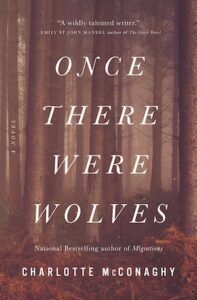
Hopepunk Featuring Creative Solutions to the Climate Crisis
Science fiction is often uncanny in its ability to predict what’s coming. For example, Jules Verne imagined suburbs dependent on gas-fueled vehicles decades before cars existed (1863) in his novel Paris in the Twentieth Century. Arthur C. Clarke imagined 3D printers long before their time. William Gibon coined the term cyberspace in his 1984 novel Neuromancer.
Yet these premonitions of humanity’s future are typically tinged with cynicism and forebodings about where our future is headed, from societal elements to the environmental. But why couldn’t a vision of a more hopeful future be just as realistic to the real world as a dystopian take?
After a year of pandemic lockdowns and climate change warning signs, it may feel out of reach. Yet, forecasters of the future that they are, science fiction authors have dedicated full sub-genres to exploring more positive versions of our possible future worlds. Enter hopepunk.
Here are eight hopepunk novels with an environmental edge and creative solutions that really could prove useful in the fight against climate change.

Suncatcher by Alia Gee
From the start, this story’s stakes just aren’t what we’ve become accustomed to…because in this world, those dark, heavy sorts of stakes just don’t exist. Among other utopian qualities, in this future Earth, the world’s energy is driven by green, renewable sources, and today’s climate change concerns simply don’t exist.
So Professor Radicand Jones’s heart is appropriately light as she sets off for a well-earned vacation in her solar-powered airship. However, her ship is soon overtaken by pirates, which leads to high adventure upon the open air.
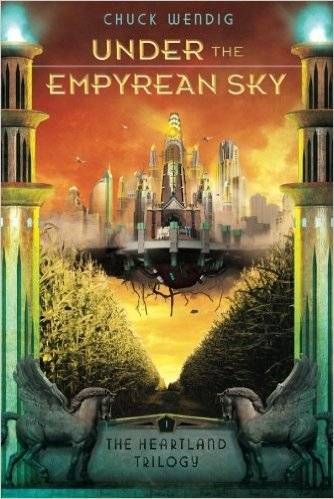
Under the Empyrean Sky (Heartland Trilogy #1) by Chuck Wendig
To be technical, Wendig has actually tagged the sub-genre of this trilogy “cornpunk,” but it fits the spirit of this list enough that I’m calling the audible and including it.
Under the Empyrean Sky is set in the Heartland, where a super strain of corn is grown as the primary fuel fo this future world, as a cleaner alternative to our current energy sources. It’s a perfect plan…except the genetically modified strain is aggressive, so controlling its growth is a full time job. Teen boy Cael is restless and already fed up with keeping the elite of the Empyrean world floating overhead in fuel all the time. And he’s determine to bring it all crumbling down.
While the government dynamics of this novel give it a dystopian vibe, there’s also a utopian feel to the physical future world this novel projects. A firm push for a broader shift to cleaner, readily available fuel sources like corn could help things along quite a lot.
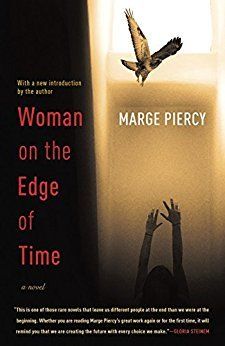
Woman on the Edge of Time by Marge Piercy
At the start of Woman on the Edge of Time, Connie Ramos, a homeless woman in New York City, is admitted into a mental institution against her will. Sounds more Girl, Interrupted than hopepunk, but then an ambassador from the future makes contact with her.
The ambassador has come on a mission to show her two possible futures. In the first, the future is a time of sexual and racial equality, and unprecedented self-actualization, in which capitalism has been eliminated. This world thrives on an environmental purity built on small-scale agrarianism and advanced green technology. Then, the ambassador shows Connie a drastically different future: A darker alternative in which both people and the earth are exploited.
Why show Connie these two possible worlds? Because her choices could make all the difference.
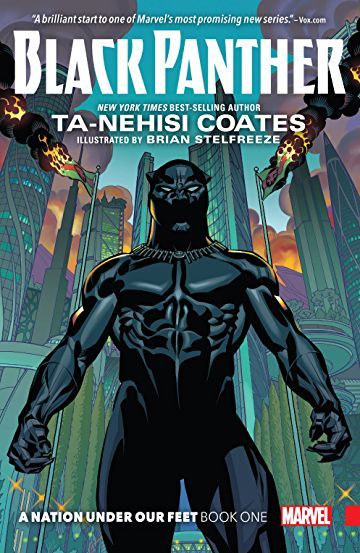
Black Panther: A Nation Under Our Feet by Ta-Nehisi Coates and Brian Stelfreeze
Wakanda is in turmoil in this modern Black Panther comic as a superhuman terrorist group attacks, all while Black Panther also faces a need for his nation to adapt in new ways. And yet, underlying the Marvel legend of Wakanda is a forward-thinking society that offers an incredible model — and great hope.
Amid other hopepunk themes of empowerment, identity, and sovereignty, the suggestion that technology can save us from our environmental sins runs rampant through the motifs of Wakanda. If we are smart enough to apply them wisely.
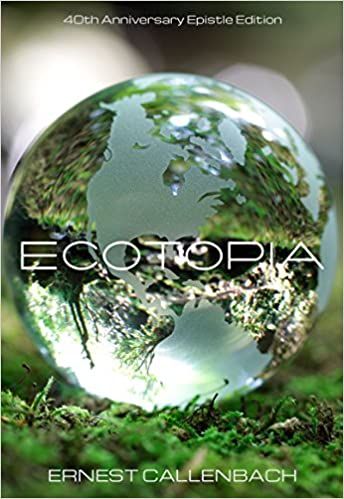
Ecotopia by Ernest Callenbach
True to its name, in this novel Callenbach is on a mission to show readers the potential of our shared environmental future. It necessitated a succession from the Union, but in a distant future, the states of Washington, California, and Oregon managed to come together to form a greener, stable state.
In this story, readers are brought along with a skeptical journalist as he treks to this land and witnesses for himself a revolutionary way of life reimagined with planet-friendliness in mind, through the implementation of a myriad of green innovations. For example, the state is structured into “mini-cities” to eliminate urban sprawl and has a zero-tolerance policy on pollution.

Walkaway by Cory Doctorow
Tagged as “post-scarcity,” Walkaway’s world has eliminated all need. How? 3-D printing. In this future, anyone has the capacity to print their basic needs, from food to shelter to medication. This has eliminated the necessity for work, by accessing designs online. Even better, the 3D printing feed is renewably sourced, and the society is zero-waste.
In short, open source has saved us.
Unfortunately, it can’t erase the past. Empty lands are wrecked by the effects of climate change. And, they still can’t cure humanity. Amid a world with no want and no work, walkaways are people who have left a society driven by parties and excess for something simpler. But the ultra-wealthy just can’t seem to let them be.
Dawn, Xenogenesis #1, Octavia E. Butler
After an atomic fire consumes Earth — the last stage of the planet’s final war — a massive alien spacecraft piloted by the Oankali rescues what they can of what’s left of humanity. Centuries later, they start to awaken the humans individually, and Lilith comes to slowly discover the Oankali as they have discovered humanity.
After centuries of nurturing, the Oankali return Lilith and others to Earth — a renewed planet will be nothing like the one they left behind. And humanity — with its new alien hosts — take on the role of this new world’s caretakers. Now that’s a revolutionary concept.
While it takes a journey through Butler’s imaginative, vivid world to come to find this alien possession less than unsettling, the vision of this future planet is one of great hope — not only has it survived humanity’s worst, but it’s recovered fully. And humanity has a chance yet to live in harmony with it.
It gives me hope that perhaps with time and great care, we can still heal our world.
Also In This Story Stream
- There Is No Environmental Literature Without Indigenous Authors
- 9 Mysteries With Environment and Conservation Themes
- Middle Grade Fiction About the Environment
- Books About Sustainability and Nature
- 10 Books at the Intersection of Climate Change and Capitalism
- 8 Queer Books That Explore Place, Nature & The Environment
- Of Women and Nature: Novels with an Ecofeminist Bent
- 9 Eye-Opening Memoirs About Nature and the Environment
- A Brief Guide to Ecofiction by BIPOC Authors



